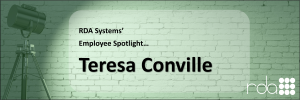Across the country, local government finances are in distress.
Years of economic growth were stunted by the onset of COVID-19, and the conditions of the pandemic itself meant that many government expenditures rose as revenue sources began to dry up.
Now, several years past the initial shock, financial recovery remains one of the pressing local government issues that public sector officials must address as the general economic forecast remains clouded.
But what are the best practices in local government budgeting and financial management?
What will lead to financial recovery?
While there are many ways local governments could respond to financial distress, taking a moment to diagnose the cause of your financial condition will bring clarity to the root issues. This will allow you to laser-focus on the actions that will provide your organization with the most recovery leverage.
Balancing Short- and Long-Term Needs
Local governments must plan for both immediate needs and long-term solutions. Which solutions offer the biggest return on investment. Which ones require the smallest investment of time and money? And which measures will get results quick enough to stabilize the situation in the short term without sacrificing long-term needs?
In conditions of financial distress, you need to keep the lights on long enough to weather the storm. To determine just how long you can continue operations as planned, it is important to perform a cash flow analysis forecast.
This will illuminate just how much of a runway you have available to launch the initiatives that will safeguard your long-term financial health.
It is also important to conduct a long-term forecast for the next three to five years to understand the scope of the problems you must resolve. By doing this upfront, you will have a better idea of what it will take to fix your local government issues.
Once you have performed these assessments, focus on diagnosing and treating the issues found in the following four central components of your public sector financial conditions:
- Financial Position
- Budgeting Practices
- Liabilities
- Environment
Financial Position
Your financial position can be boiled down to four additional elements: cash, reserves, revenues, and expenditures.
- Cash: How much cash do you have? What is your current cash flow? When will you have negative cash flow? How long do you expect to have a deficit?
- Reserves: Do you have reserves available to your organization that could provide a financial bridge to the long-term restructuring required for financial health?
- Revenues: Isolate your various revenue streams. Which ones are more susceptible to economic downturn? How important are those sources to your local government revenues?
- Expenditures: What are your biggest and fastest growing expenditures? What expenditure controls do you have in place? Which expenditures provide the least value and could be cut?
Budgeting Practices
Understanding and applying the best practices in local government budgeting is crucial to your short- and long-term financial health.
As you diagnose the financial condition of your organization, focus on these three budgeting practices: structural balance, variance analysis, and funding sources.
- Structural Balance: Is there an imbalance between regular expenditures and revenues? Financial distress is all but certain if recurring expenditures are funded by unpredictable revenues.
- Variance Analysis: What is the difference between your planned and actual spending? If there is a big difference, why and how can you close the gap?
- Contingency Funds: Does each department have a contingency built into its budget that covers situations of financial distress?
Liabilities
There is always the possibility that your organization has financial obligations or practices that could harm it financially. This is one area that requires proper diagnosis to determine the scale of the liability and the corresponding treatment.
Assessing your organization’s liabilities can begin with questions such as: What are your current debts and what are their repayment schedules?
Does your agency face any lawsuits, and can they be mitigated or avoided altogether with better policies?
Can you better manage self-funded employee health insurance plans? What are your legal obligations regarding post-employment benefits?
These and other questions can help you assess the financial liabilities your organization faces that could be eliminated or, at the very least, mitigated to relieve some of the financial burden limiting recovery.
Environment
One of the greatest challenges of financial management in the public sector is its reliance on the current political and economic environment. The financial health of local governments depends largely on funding from local, state, and federal sources.
Thus, it is important to track, evaluate, and respond to such environmental factors.
For instance, the state economy will be a good indicator of future tax revenue. Housing data, unemployment rates, consumer confidence, and other economic indicators are good metrics to begin with.
You should also be aware of the state’s financial situation so you are prepared to deal with any policy decisions that will affect you on the local level.
And as we have witnessed with COVID-19, changing demands for government services can force local governments to increase expenditures to meet public health needs.
About RDA
RDA’s innovative ERP software provides meaningful transparency and access for your community and staff, along with powerful insights into data. The RDA Solution is hosted in the Cloud, providing regular backups, product updates, and concierge support, ensuring that clients feel confident and are successful with their new software.





